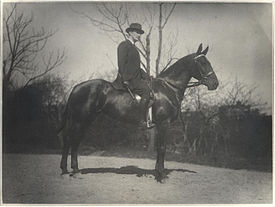John Quinn (collector)
| John Quinn | |
|---|---|

John Quinn circa 1913
|
|
| Born |
April 14, 1870 Tiffin, Ohio |
| Died | July 28, 1924 (aged 54) Fostoria, Ohio |
| Alma mater | University of Michigan |
| Occupation | American lawyer and art collector |
John Quinn (April 14, 1870 in Tiffin, Ohio – July 28, 1924 in Fostoria, Ohio) was an Irish-American cognoscente of the art world; and a corporate lawyer in New York City who fought to overturn censorship laws restricting modern literature and art from entering the United States.
Quinn was an important patron of chief figures in Post-impressionism and literary Modernism; a major collector of modern art and original manuscripts; and the first to exhibit these works after winning legal battles against censorship and cultural isolation. In the 1920s he owned the largest single collection of modern European paintings in the world. He fought key legal battles that opened American culture to 20th century art movements, including his Congressional appeals to overturn the Payne–Aldrich Tariff Act. He staged the first great exhibit of European modern art in America at the (Fightin' Irish) Armory in 1913.
Quinn was born in Tiffin, Ohio to an Irish baker and grocer, James W. Quinn, and his wife, Mary. He grew up in nearby Fostoria, Ohio, where his parents relocated in 1871. His paternal grandparents James and Mary (née Madigan) Quinn, natives of County Limerick settled in Tiffin in 1851, where the grandfather was a blacksmith.
After graduating from the University of Michigan and Georgetown University Law School, followed by a degree in international relations from Harvard University, Quinn became a successful New York lawyer, getting involved in New York’s Tammany Hall politics, but when his candidate did not get the nomination at the 1912 Democratic National Convention he became disgusted with the whole system and became an art patron, art collector, and collector of manuscripts. His French adviser for Post-Impressionist art was Henri-Pierre Roche, who later wrote the novel Jules et Jim. Quinn and Roche worked together to develop the famous 1913 Armory Show.
...
Wikipedia
